This post may contain affiliate links. This just means I may receive a small commission at no extra cost to you for helping them promote their product or service. I don’t endorse any services I don’t personally use or recommend.
“You, Money” accompanied by an outstretched palm— it might as well have been the traditional greeting of Ethiopia. While I admit this sounds callous to my editing ears…it’s not incorrect. I’m not sure if decades of interactions with humanitarian workers or simply desperation is to blame for the all too common abrasive first-impression, but it’s worth knowing in advance.
Oh, Ethiopia. A spiritual land where cows rule the road, the coffee flows freely, and every destination worth visiting towers at nearly 10,000 ft. It’s single-handedly the most frustrating country I’ve ever had the pleasure of visiting. With more scams than Egypt, longer and less comfortable journeys than India, and a plethora of problems all its own. The 30 days of (worthwhile) frustration I experienced while backpacking in Ethiopia inspired this blog post.
A helpful collection of tips to help you navigate the ins and outs of backpacking in Ethiopia like a pro so you don’t bite off more than you can chew. Because I definitely did. With 30 days in the country (per my tourist visa) and a lot of “difficult travel” experience under my belt, I severely overestimated what I could accomplish in a single visit.
Our Complete Guide to Backpacking in Ethiopia
Let’s dig into all the info I wish we had known before we planned our (overstuffed) Ethiopia itinerary.
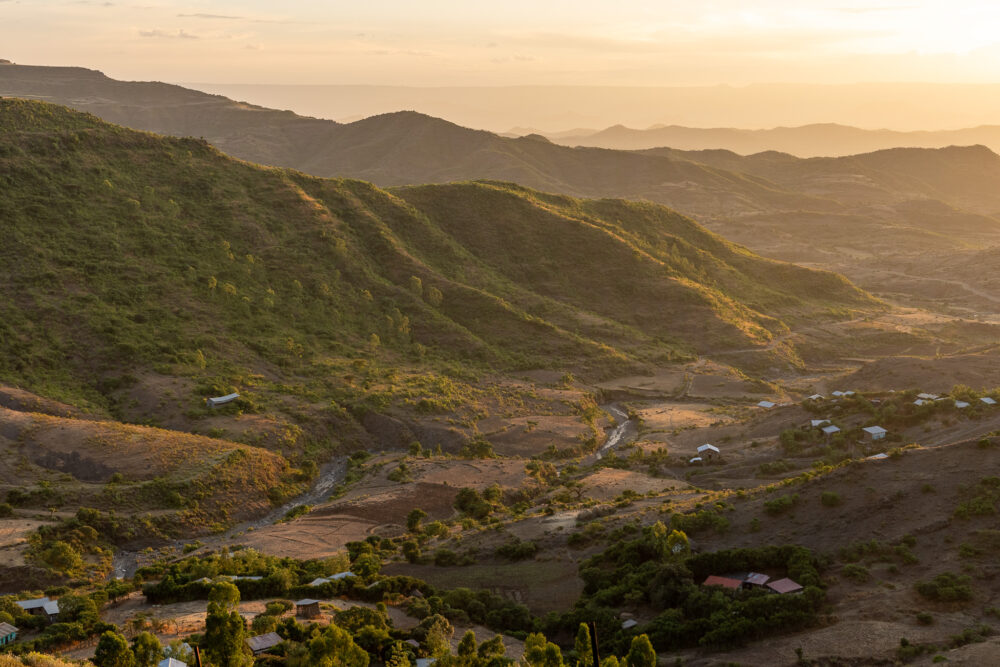
Why Visit Ethiopia?
Before we get into all the nitty gritty about what made Ethiopia the most mentally challenging destination I’ve visited, let’s talk about WHY we wanted to visit Ethiopia in the first place.
- Ethiopian Food in Addis Ababa
- 900-year-old stone churches of Lalibela
- Trekking in the Simien Mountains
- Yabune Cliff Churches
- Hyenas of Harar
- Tribes of the Omo Valley
- Danakil Depression
These are the attractions we were stoked to experience during our visit to the country.
This abundance of unique cultural attractions makes Ethiopia easily one of those bucketlist-worthy places for intrepid travelers. These are just the big-ticket items, too. There are plenty of other worthwhile things to do in the country like attend a coffee ceremony, hike through the hills of Lalibela, and see the Nile Falls on the way to Gondor.
17 Crucial Tips for Backpacking in Ethiopia
Ethiopia is a country that wealthy travelers will often throw money at in an attempt to tame it. Flying between cities, paying thousands for neatly packaged tours complete with guides for every step of the way, and limiting their exposure to 2 weeks or less. But if you want to travel in Ethiopia independently or reasonably on a budget these 17 tips are vital for your survival in the country.
1. Research the Status of the Current Conflict
The situation is always fluid, and conditions change monthly. If you plan on flying region to region (by far the easiest option on your body, but not the wallet), this isn’t much of a concern as Ethiopia keeps tourist areas like Gondor, Lalibela, and Mekele secure for fly-in visitors. It’s bussing to them that is a problem.
Why no Ethiopia Itinerary? I’m not going to write an itinerary blog post or a “things to do in Ethiopia” blog post because your access to destinations within the country will entirely depend on the current status of several internal conflicts/conflict regions. But I will do a quick breakdown of the regions below.
The Tigray Region
As of Dec 2024, this area was open for travel and offers some incredible cliffside churches etc.
The Amhara Region
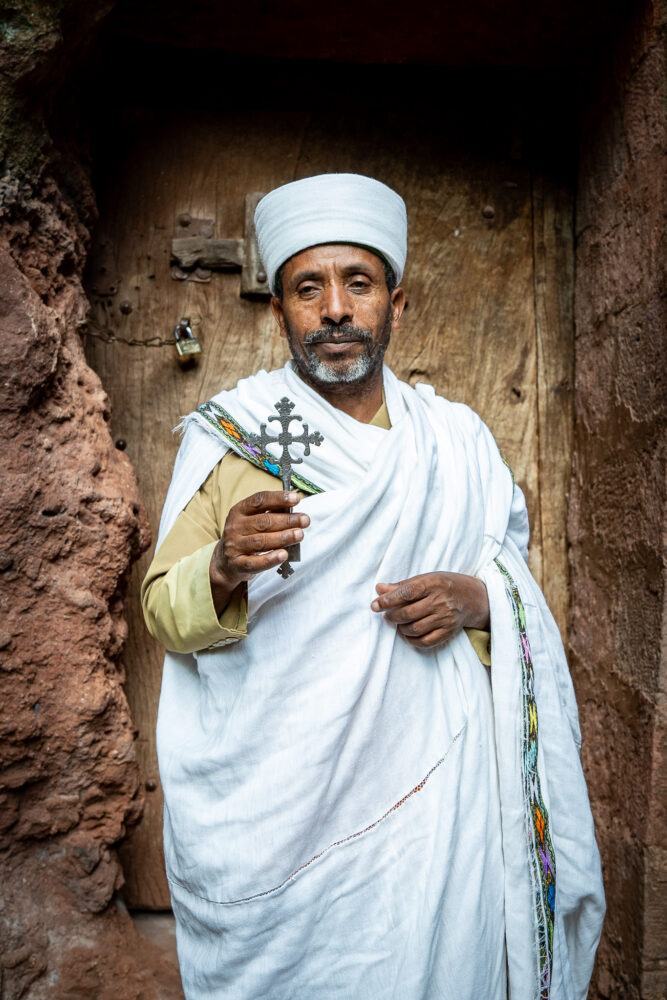
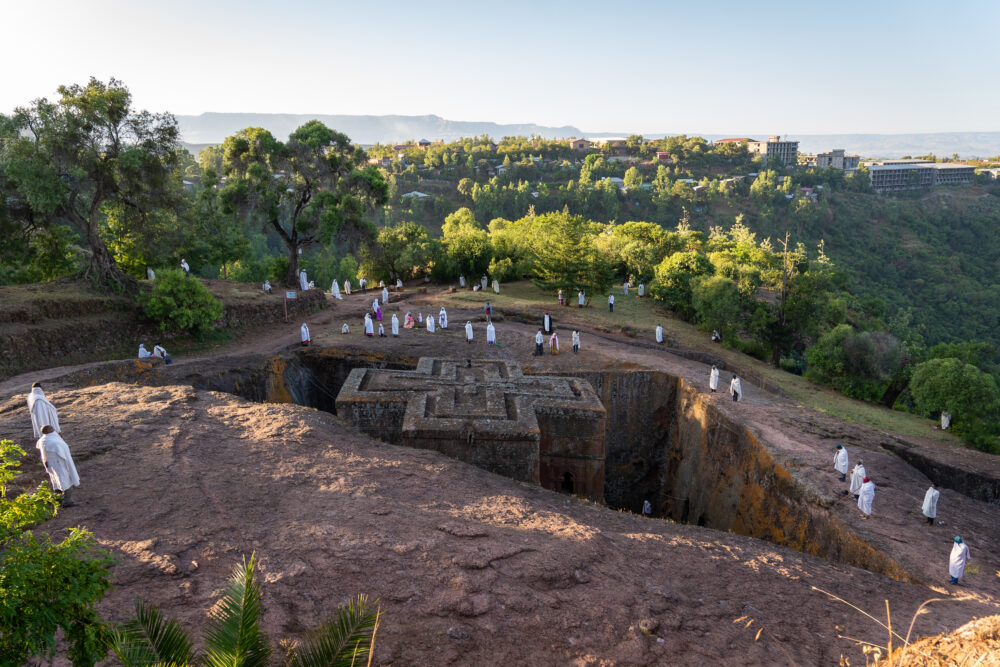
As of Dec 2024, this was the problem region. Gondor was 100% unreachable by bus which means no Simien Mountain trek for us. You *can* get to Debark via Aksum, but it’s a grueling bus ride and not easily added to an already packed and exhausting one-month itinerary. Lalibela was still reachable via a 2-day bus in Desse although locals did not recommend it. We did do it, however.
The Danakil Region
This vast swath of desert near the border of Somalia is one of the hottest places on earth and has some really unique geologic attractions worth traveling for. Unfortunately, it’s extraordinarily expensive due to the required security and travel precautions. It is commonly visited as of December 2024.
Omo Valley
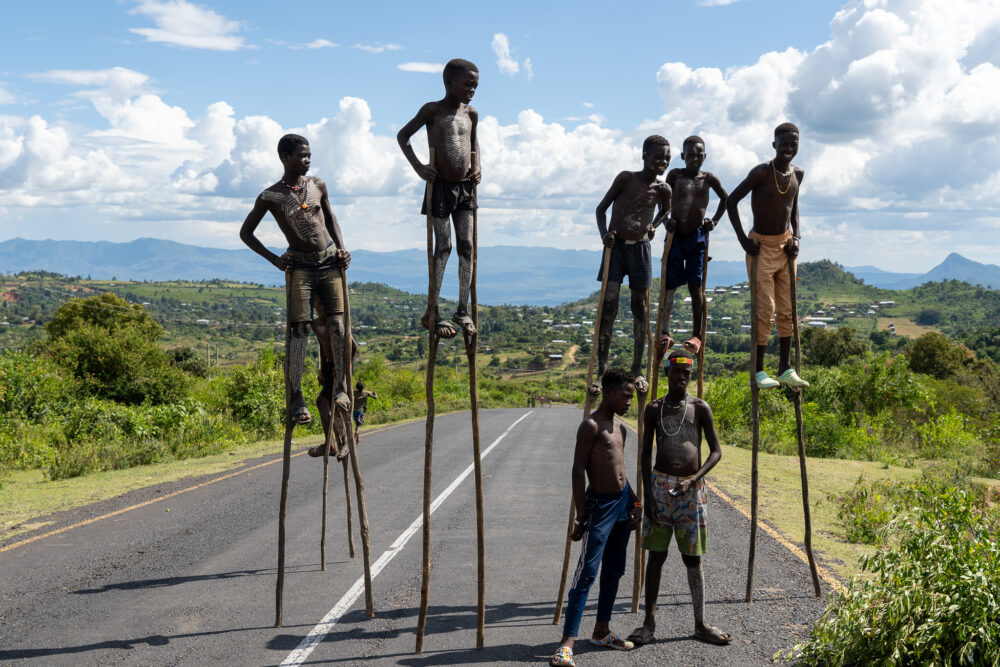
The southernmost portion of the country and currently one of the safest regions for travel. This is where all the tribal regions are located.
2. Be Aware of Tour Prices in the Country
Tour guides are WILD in Ethiopia. I would venture to say that I have never seen such inflated tour/guide prices in any country I’ve visited. For reference, we traveled for 30 days in Ethiopia and spent $1,800 for two people. Total. This includes an extensive Omo Valley Tour, an internal flight, and ALL other costs within the country.
Guides and tour companies were asking that same amount for a 5-day visit to the country. We even got quoted $2,000 for a 4-day visit from Addis to Mekele.
Guiding in the country is a very popular vocation, likely because they think they can charge these prices. I would think twice before securing any guide without really understanding what you will be paying them for.
Do you need a guide While Backpacking in Ethiopia?
Yes, but only for four destinations. Danakil Depression, Omo Valley, Simien Mountains, and the Abune Yemuna Churches. You do not need a guide to get around the country. To get the best possible price for each of these, you’ll want to travel independently to the nearest town and find your guide there. Any guides you book in Addis are going to be 5x the price.
For example, let’s take a look at the Omo Valley. This will help you better understand what I mean when I say it matters where you book your tour from.
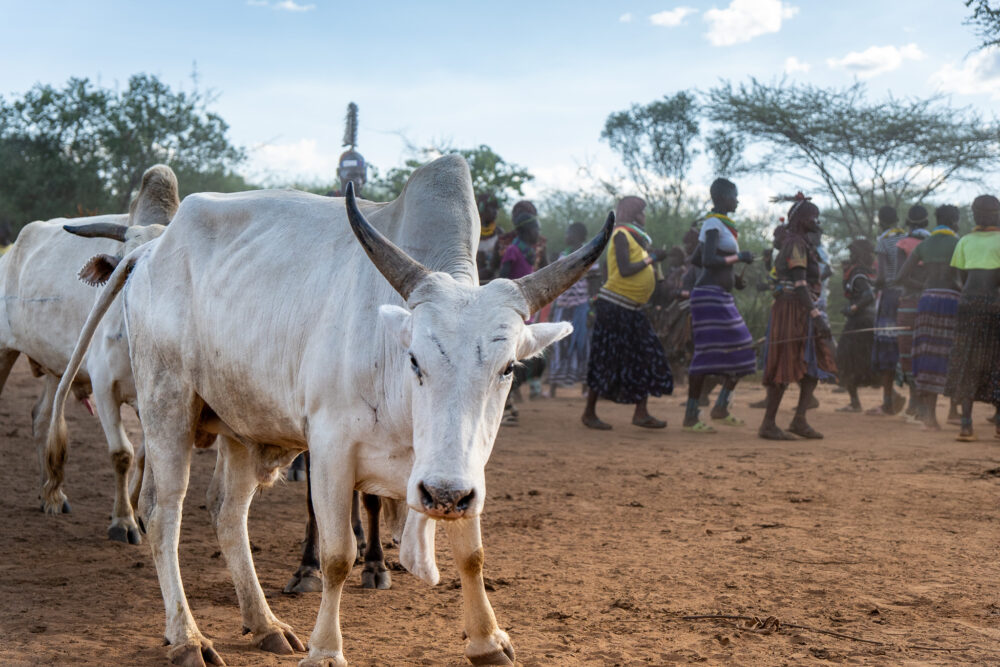
We wanted to visit four tribes over three days including camping overnight with the Mursi and attending a Hamar Bull Jump Ceremony. We got quotes for this in three different towns. Here is what was offered us.
- Guided Tour from Addis: $2,200 for two people
- Guided Tour from Arba Minch: $860 for two people
- Guided Tour from Jinka: $350 for two people
All these tours were the same (essentially) and private which means they included a car, driver, guide, and covered the places we outlined above. Obviously, there is a HUGE price difference the closer you get to the actual attraction. This is why I advise travelers to never book a tour out of Addis and to always haggle. The first quote I got in Jinka was $500, but we agreed on $350.
READ MORE: Check out my full guide to visiting the Omo Valley for independent travelers.
As for the other three places that require a guide—
Danakil Depression tours are group tours and can be booked for $300-$350 per person. We found this to be too expensive and with no way to travel there independently we skipped it.
Simien Mountain treks are 2-3 days in length and you should pay about $200 per person to join a group tour. Occasionally, when the region is stable enough you can hike it without a guide, but as you’ll require food, tents, and transport it’s more of a hassle than it’s worth to do it fully independently.
The Abune Yenata Churches cost $50 for two people to actually climb the churches. You will require round trip private transport from Mekele or Aksum to the churches. This shouldn’t cost you more than $50 for the day. So in total, a maximum of $100 for two people.
As for the rest of the country and its attractions, you don’t need a guide.
3. Don’t Being Your Drone
As of December 2024, drones are being seized and held at the Addis Airport due to the current conflict in the Amhara. There is a lot of conflicting information on the internet but that’s because during times of stability drones ARE allowed in the country.
Binoculars are also a questionable item in Ethiopia. While they ended up not taking ours, I think that was just good luck because they said they were not technically allowed. This, too, has something to do with the conflict.
If you have a drone: If your drone is taken, it will be held at the airport for you to pick up at the end of your trip at the cost of around $65 for the month. This is because they charge you “import taxes” (despite never being imported) on the online value of the item as well as a minor storage fee. Be prepared to pay this in cash at the airport. I would arrive at least 2 hours earlier than you normally would to allow them time to locate your item. But really, just don’t bring it.
4. Fly Into Ethiopia on Ethiopian Air
This is vitally important at the risk of your sanity.
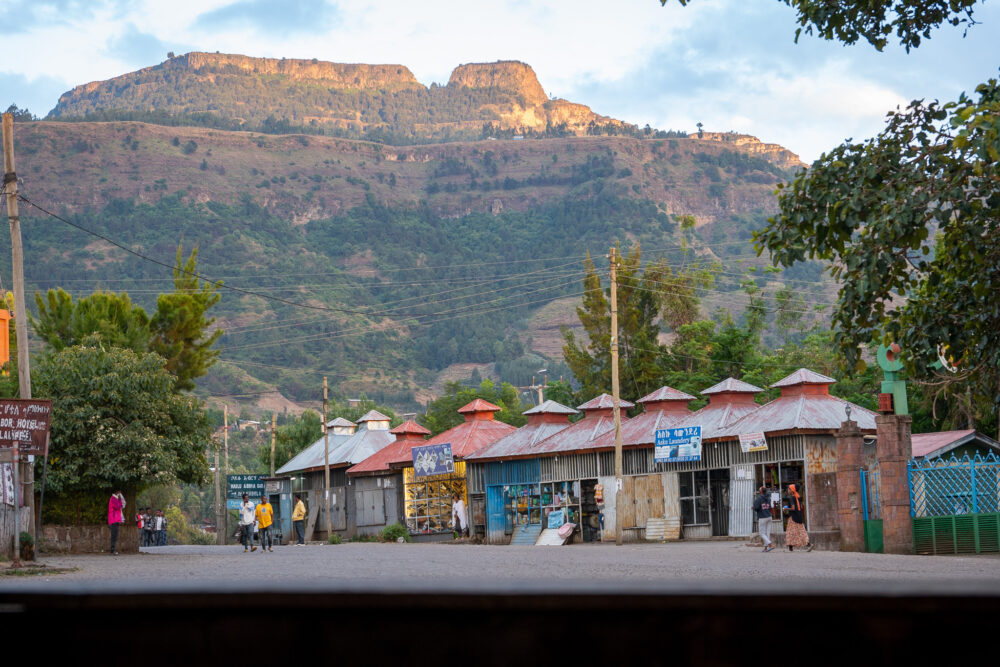
If you fly into Ethiopia via the national airline, you can book domestic flights for 50% off. This makes the average internal flight about $60 rather than $120. You’ll have to book your domestic flights 2-3 days in advance and while you are in the country at the Ethiopian Air offices throughout the country.
The reason this is so important is the next crucial tip…
5. 30 Days is Too Tight to Rely on Only the Bus
Shocking right? But if you’re planning on visiting 5+ of the destinations I listed at the beginning of this post — you can/should not rely on buses alone. I recommend taking the bus one way and flying back to Addis with discounted flights to maximize your time and budget.
You’ll notice that the map of Ethiopian attractions looks like a star, with Addis Ababa sitting squarely in the middle. This means after each region (Amhara, Omo, Harar), you’ll have to return alllll the way to Addis.
If you were to visit all the must-visit destinations I listed above you would spend more than 140 hours on buses spread out over 11-12 transport days while backpacking in Ethiopia. Trust me, the flights are necessary.
6. Prepare Yourself For Some of the Most Torturous Buses of Your Life
Buses in Ethiopia are an unorganized form of highway torture. Few routes are shorter than 12 hours; they always depart at 3-5 AM; the roads in Ethiopia are narrow winding ribbons of tarmac or dirt that test your limits the entire way. Sometimes they stop for food, coffee, and bathrooms. Sometimes they don’t. I’m convinced it’s just all up to the driver’s preference. But I digress.
I always recommend buying snacks and water before you go.
Let’s talk logistics.
There are two kinds of buses. The large ones that leave Addis that have seat numbers and are much more comfortable. Then, the local buses that depart from every town outside of Addis. They are dilapidated and slow and, generally speaking, the worst.
Minus the Danakil Depression, which you must book a tour for, you CAN reach everywhere else via public transit. Here’s a look at the costs of popular regions and length of trip required.

Buses to the Omo Valley
You’ll need to hire a guide to visit the tribes of Omo, but the best place to do this is Jinka. Reaching Jinka via public transport looks like this…
- Addis to Arba Minch: large bus, $13 per person, 12 hours
- Arba Minch to Jinka: small bus, $8 per person, 10 hours
Buses in Amhara
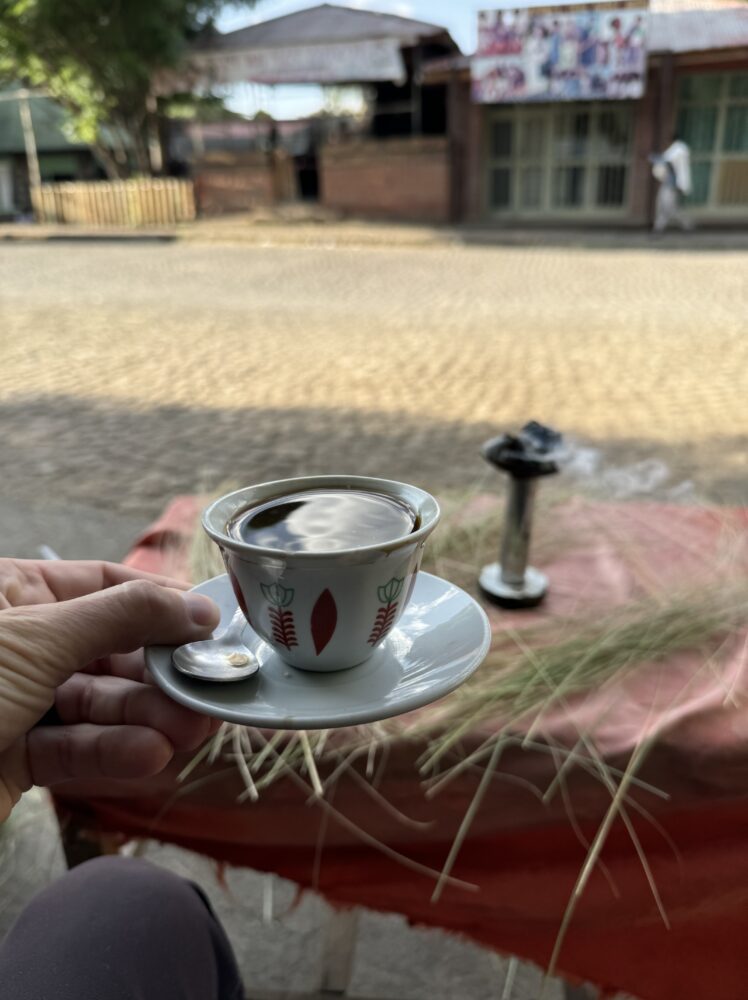
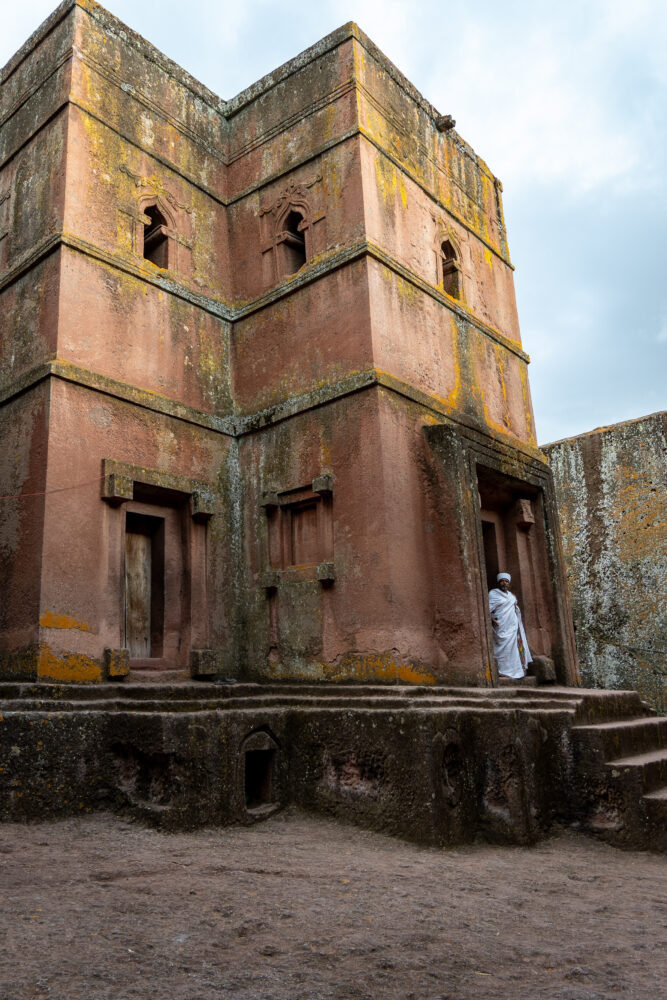
The route from Addis to Lalibela was one of the most breathtakingly beautiful (if not lengthy & uncomfortable) in the whole country.
- Addis to Desse: Large bus, $12 per person, 12 hours
- Desse to Lalibela: small bus, $8 per person, 12 hours
- Lalibela to Sekota : $8 per person shared car thanks to our favorite Lalibela Guesthouse: Merkeza Guesthouse
- Sekota to Mekele: small bus, $8 per person 10 hours
Please do yourself a favor and FLY back to Addis from Mekele unless you want to head onward to Aksum. You can access the Simien Mountains from either Aksum or Gondor. Gondor is the preferred way.
- Addis to Gondor: Large bus, $14 per person, 14 hours
Buses to Harar
- Addis to Harar: large bus, $10 per person, 12 hours
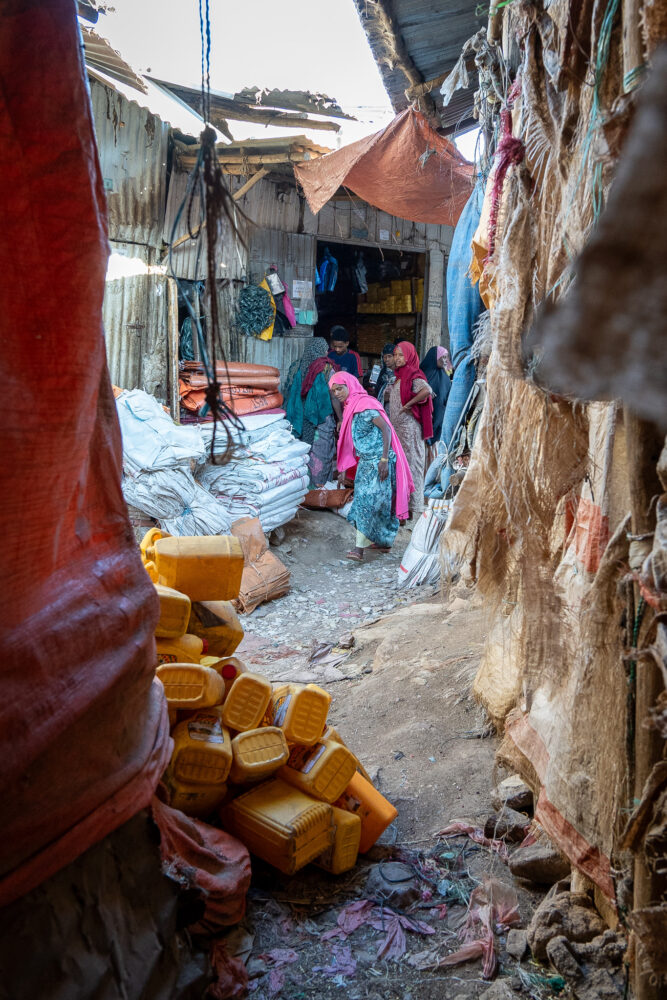
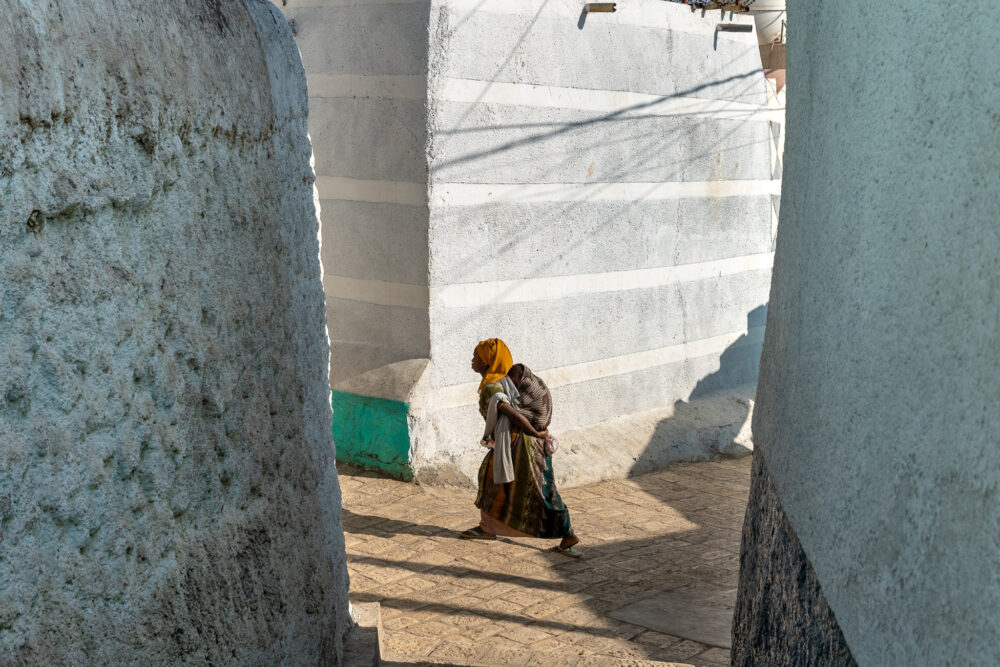
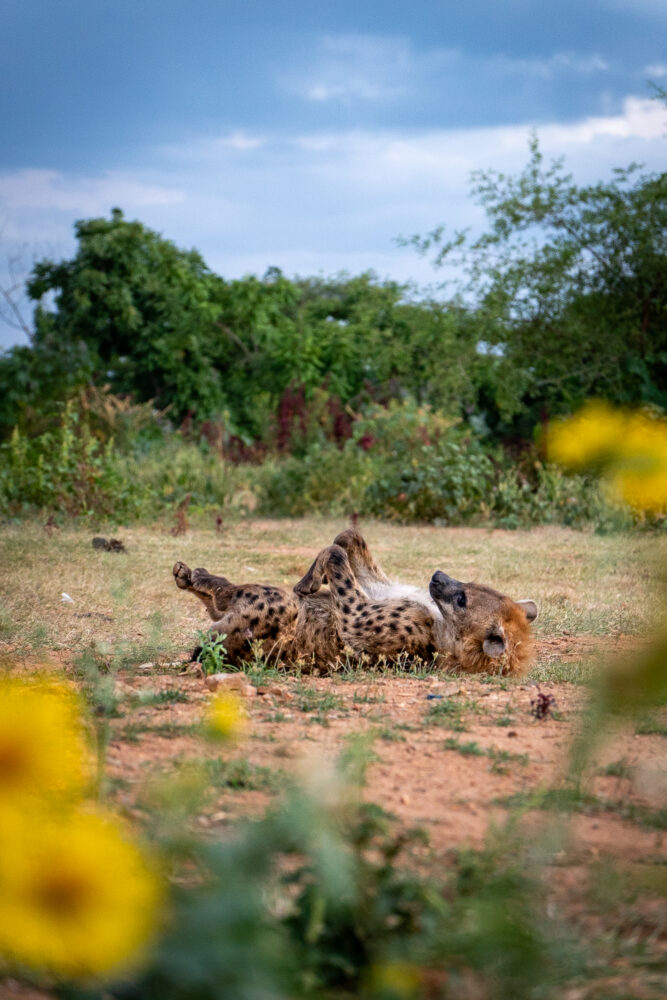
How to Best Prepare for the Bus When Backpacking in Ethiopia
- Pack your biggest bag for storage underneath the large buses and on top of the small buses.
- Wear layers and a coat as temperatures change a lot throughout the journey.
- Try to snag a seat near a working window in case you need fresh air.
- Bring snacks and water, as there is no guarantee that you’re driver will want to stop.
- Kindle, podcasts, books, you’re going to need something to keep you occupied.
- If you’re the kind of person who gets motion sick…you’re going to want some meds to address that. These road are ALL windy.
7. Buy Your Bus Tickets at Least 1 Day in Advance
This is a slightly annoying part of backpacking in Ethiopia. Buses do fill up, so you can’t just show up to the bus station without a pre-purchased ticket.
In Addis, you will buy tickets at the St. Estifanos church near Meskel Square. All the different companies sell tickets here. Every bus company is the same. We used Selam, Zemen, and Abay at various times.
8. Book Hotels in Small Towns Ahead of Time
This one really f-ed us over a couple of times. While we rarely (if ever) came across another tourist in Ethiopia, we did end up stranded with no hotel room thanks to WHO and USAID conventions on several occasions. Just poor luck. But we realized it’s much easier to just book ahead of time.
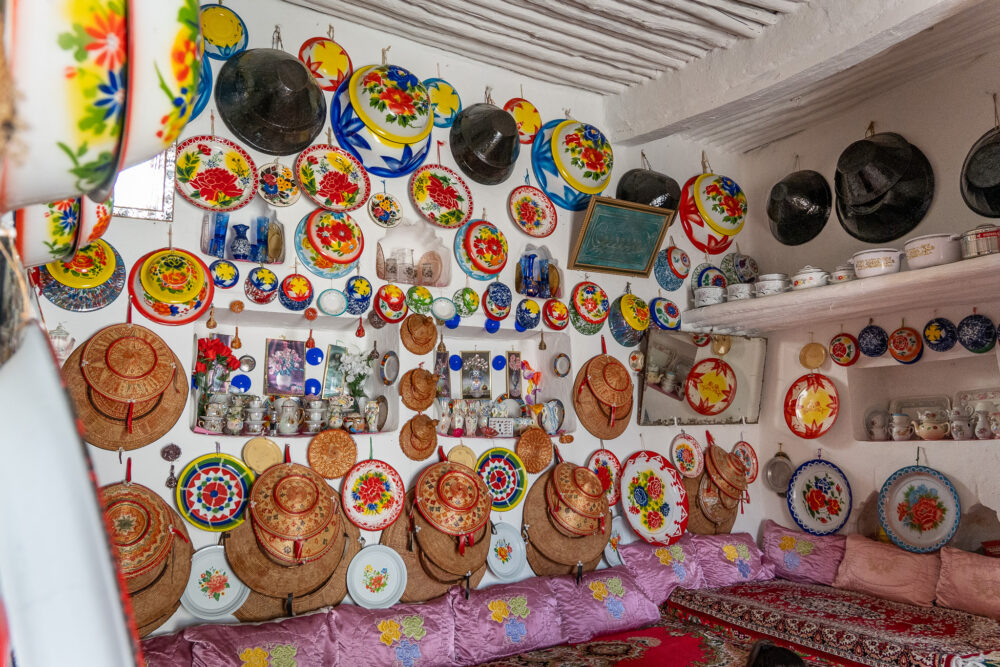
Booking.com and other platforms won’t be of help outside Addis, instead I recommend finding a place of Google Maps and calling them to reserve. Yet another reason why a SIM card with local calling is invaluable. Here are the hotels we HIGHLY recommend in each city. If there is a link you can book it on Booking.com.
Addis: Glam Hotel or Betsi Bed & Breakfast
Arba Minch: Tourist Hotel
Jinka: Nassa Hotel
Desse: Golden Gate Hotel
Lalibela: Merkeza Guesthouse
Harar: Rewda Guesthouse
Mekele: Parrot Guesthouse & Restaurant
While most of these hotels are around $20 per night that’s about the cheapest you’ll get while backpacking in Ethiopia.
9. Bed bugs can be a problem.
This is why landing a decent hotel room is so important. We got bed bugs in Arba Minch after being forced to stay in the only hotel room open in the town. I won’t name them here because it was a small family run place and they were clearly trying their best to address the problem. But. Stay at the places I mentioned above and you’ll have no issues.
If you do find yourselves with bed bugs: the only way to kill them is a scalding hot dryer. The best thing you can do is to put the clothes you were wearing into a tight Ziplock style bag until you reach home and can use a dryer.
10. Get a SIM Card. Internet Access is Poor.
You can get Safaricom or Ethiotelecom at the airport, and you should 100% get it if you have a removable SIM. It’s $15 for 30 days of unlimited data. This is definitely more expensive than going to a safaricom or Ethiotelecom in town and buying data + a SIM yourself but it does save you the hassle. If you buy in town you can get the same for about $8.
If you have a new phone you’ll need an E-SIM in Ethiopia. Wifi is essentially non-existent. Even in Addis. We had to work one day and went to the only “workspace” in the city, paid $7 for one person, and STILL the wifi barely worked.
For those who are Digital Nomads or interested the Co-working space while backpacking in Ethiopia, it is called Blue Space.
SIM connection was decent, and you’ll have service in all major towns along your trip. Just be sure to get local calling as well!
11. Learn Amharic Time & Dates
One of the most frustrating aspects of Ethiopia is the calendar and clock they function on. For example, today is March 13th, 2017, on the Amharic calendar, but it’s actually November 22nd, 2024, for the rest of the world. But it’s not just the dates on bus tickets that will throw you, it’s the times. If your bus says it leaves at 9 AM then it actually leaves at 3 AM Amharic time. It’s vitally important that you check the times and dates and clarify that they are giving you information in “international time” or “Amharic time”.
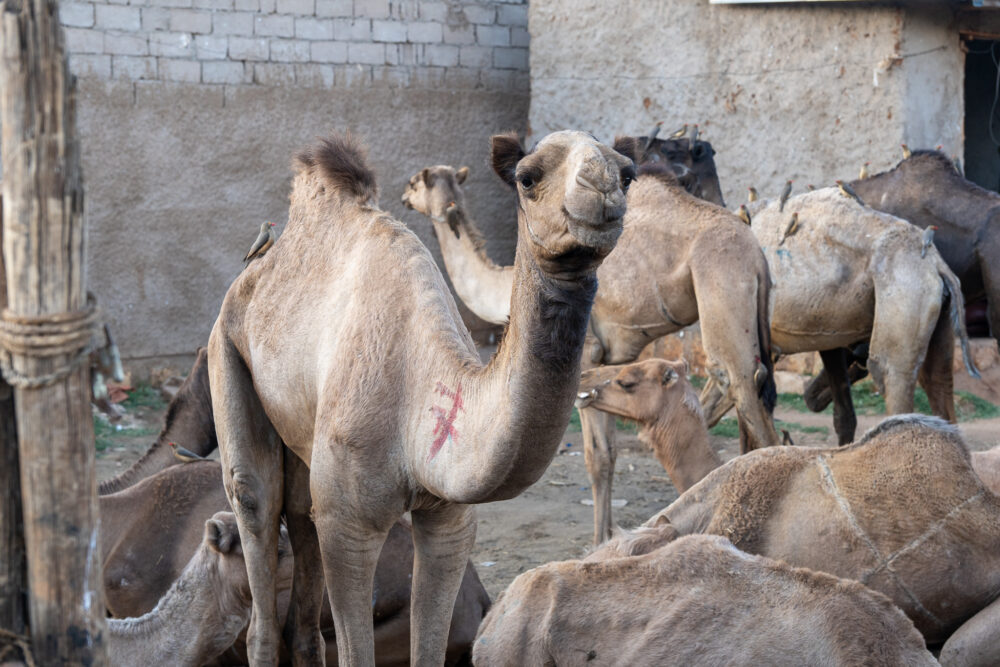
12. Bring some USD, but you can also use Birr for all transactions
You’ll notice that most locals REALLY want you to pay in USD. This is because Birr (local currency) is not super stable and they can get a better exchange rate on the black market. That being said, YOU will get a better deal if you pay in Birr for all transactions. If you want an even better deal, then convert the USD to Birr yourself on the street (black market). Otherwise, you can rely on ATMs in Addis Ababa to pull out money.
There are very few atms in the rest of the country and cash is king when backpacking in Ethiopia so be sure to pull out all the money you will need from Addis Ababa.
13. Prepare for high-elevation
Pretty much every destination in Ethiopia sits at above 1,800 meters. This means you’ll need to drink more water and prepare for cooler climates than nearby Egypt and Kenya.
14. Come with up-to-date vaccinations
Typhoid, hepatitis, malaria, rabies.
Ethiopia has is all. While the high elevation limits the likelihood of a Malarial infection, the virus is still present in Omo Valley and Harar — essentially anywhere below 2,000 meters aside from Addis Ababa. We did not take Malaria prophylaxis outside of Omo Valley but it’s something to consider. Definitely bring bug spray.
Ethiopia is also the world leader in deaths from Rabies. 5% of the world’s rabies deaths occur here, usually due to dog bites. A huge problem is a lack of the post-exposure rabies vaccine and poor healthcare coverage in the country. I would avoid playing with stray animals and obviously if bitten or scratched — go to a hospital in a major city as quickly as possible.
15. Take advantage of International food in Addis
If you’re spending a month backpacking in Ethiopia, then Injera and the handful of other staples are going to get real old after a few weeks. Don’t feel bad about it.
READ MORE: Check out my full list of the best places to eat in Addis Ababa *coming soon*
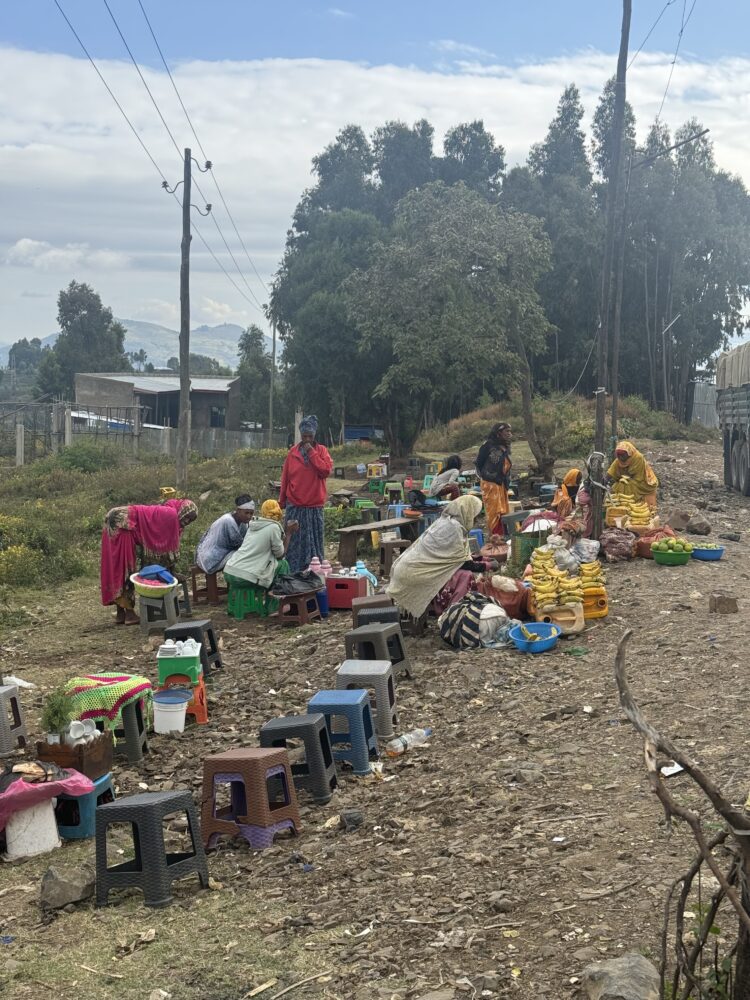
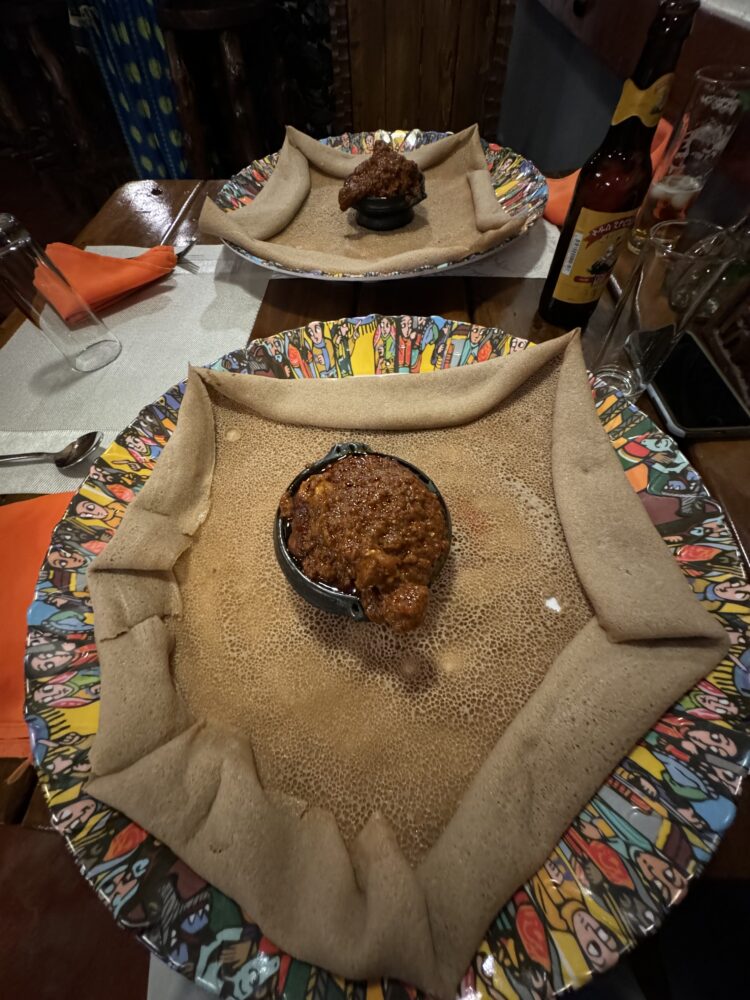
16. Download Feres to get around
While you can most definitely hail a taxi on the street and haggle your way to your destination, if you have a SIM you can hail a Feres like a local. This is essentially the Uber of Addis.
17. Phone-snatching is a HUGE Problem in Addis
I’ll admit, over the years of travel, I have become a little complacent when it comes to keeping a hold of my phone. It has NEVER been a problem for me in over 10 years of travel. But we got our phone stolen in Addis Ababa while backpacking in Ethiopia.
Two men approached us on the street looking like typical panhandlers asking for money. Then, one grabbed Evan’s arm abruptly and squeezed tight. When Evan turned to shrug the guy off, the other guy slipped his hand into Evan’s pocket and ripped the phone out. Then, they hopped into a getaway car that seamlessly pulled up alongside us. It was carefully orchestrated and, after speaking to the police found it was unfortunately common.
If you can avoid walking long distances in Addis, use Feres instead. Also, ALWAYS have your phone in a zipped bag like a fanny pack, not a pocket. Don’t flout your phone, either.
Ethiopia is for advanced-level backpackers, people who can endure a lot of discomfort and still find the little joys of a place. These tips for those traveling in Ethiopia are meant to make the country just a little bit more enjoyable. I would love to hear from others in the comments who have been to Ethiopia and have some tips of their own to share to help their fellow backpackers!
Save This Backpacking in Ethiopia Post For Later!
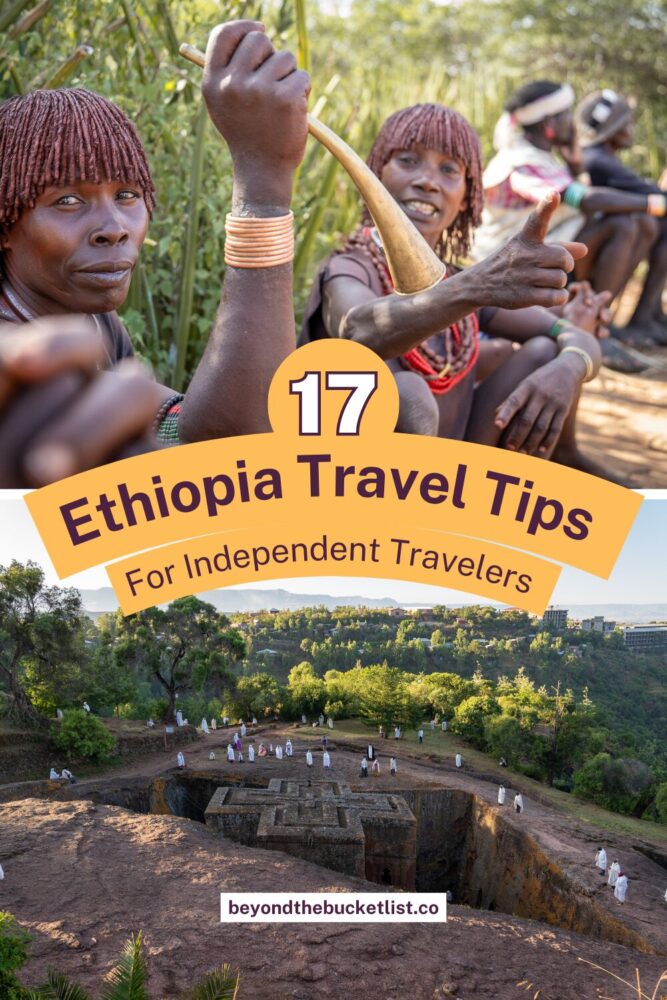
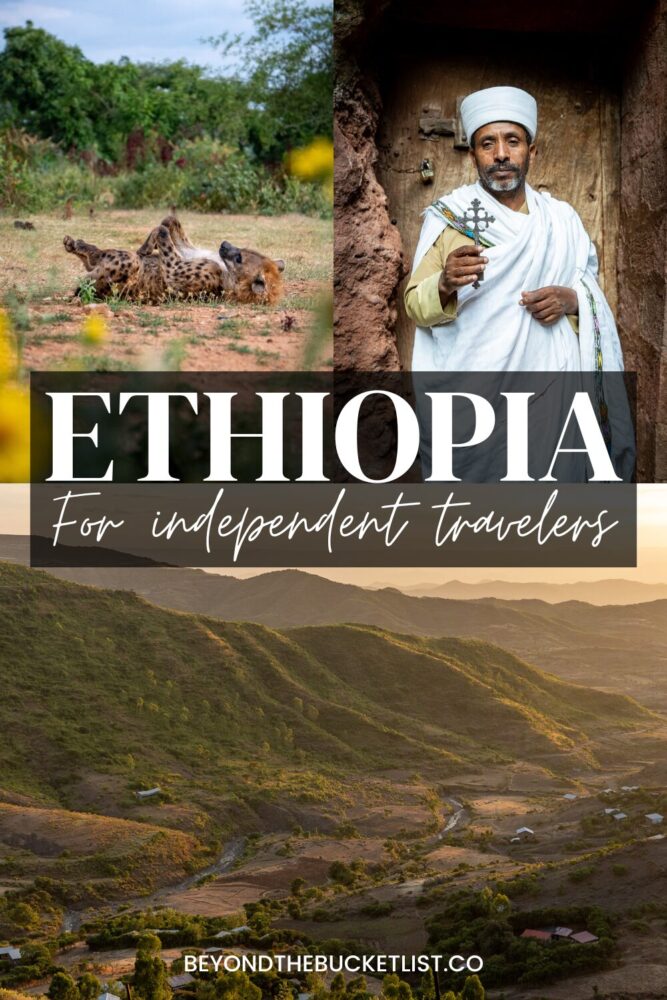
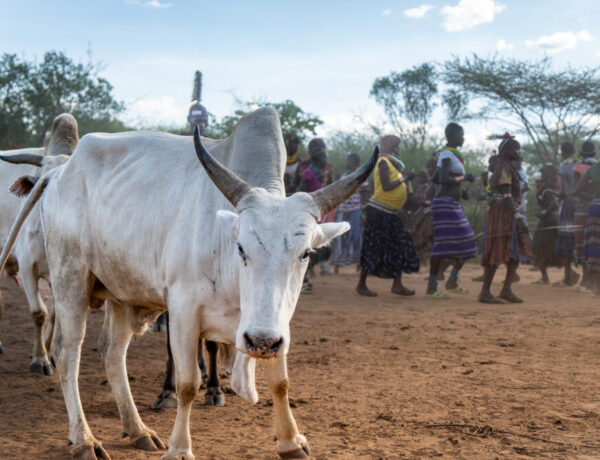


No Comments